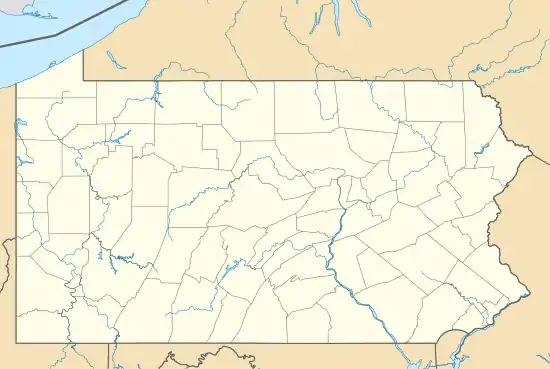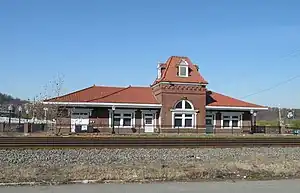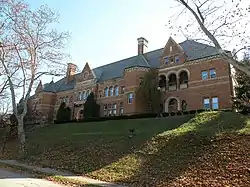Homestead Historic District | |
 The Bost Building, built in 1892, on East Eighth Avenue, was AA union headquarters during the Homestead Strike that year. | |
  | |
| Location | Eighth Ave. area roughly bounded by Mesta, Sixth, Andrew, 11th and Walnuts Sts. and Doyle and Seventh Aves., Homestead, Munhall, and West Homestead, Pennsylvania. |
|---|---|
| Coordinates | 40°24′17″N 79°54′27″W / 40.40472°N 79.90750°W |
| Area | 202 acres (82 ha) |
| Built | 1892 |
| Architect | Multiple |
| Architectural style | Late Victorian, American Foursquare |
| NRHP reference No. | 90000696[1] |
| Added to NRHP | May 10, 1990 |
The Homestead Historic District is a historic district which is located in Homestead, Munhall, and West Homestead, Pennsylvania.
It was listed on the National Register of Historic Places (NRHP) in 1990.
History
This historic district encompasses the site of the Homestead Strike of 1892, when the Carnegie Steel Company, under the leadership of Henry Clay Frick, broke the Amalgamated Association of Iron and Steel Workers union.[1][2]
This district also includes the Homestead Pennsylvania Railroad Station, which is separately listed on the NRHP, and the Bost Building, a U.S. National Historic Landmark.
It is situated close to Pittsburgh.
Gallery
 Homestead Pennsylvania Railroad Station, built circa 1890, on Amity Street in Homestead
Homestead Pennsylvania Railroad Station, built circa 1890, on Amity Street in Homestead St. Mary Magdalene Church, built 1895, at 1008 Amity Street in Homestead
St. Mary Magdalene Church, built 1895, at 1008 Amity Street in Homestead Carnegie Library of Homestead, built in 1896, at 510 East 10th Avenue in Munhall
Carnegie Library of Homestead, built in 1896, at 510 East 10th Avenue in Munhall
References
- 1 2 "National Register Information System". National Register of Historic Places. National Park Service. March 13, 2009.
- ↑ James, Earl D.; Walter Kidney; Lu Donnelly; Patricia Sands (1990). "Homestead Historic District" (PDF). National Register of Historic Places Nomination Form. Pennsylvania Historical and Museum Commission. Retrieved January 9, 2014.
Wikimedia Commons has media related to Homestead Historic District.
This article is issued from Wikipedia. The text is licensed under Creative Commons - Attribution - Sharealike. Additional terms may apply for the media files.